Christmas traditions explained: Why do we wear paper crowns, and kiss under the mistletoe?
'Tis the season to deck those halls, but why do we do the strange things we do in December? We have all the answers...
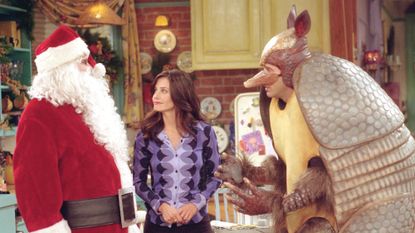

'Tis the season to deck those halls, but why do we do the strange things we do in December? We have all the answers...
Christmas - the most wonderful time of the year. A time for Christmas films, party dresses , festive hangovers and a hell of a lot of traditions.
An overweight septuagenarian in a red suit. A stolen kiss under the mistletoe. An evergreen tree covered in fairy lights. Stockings filled with clementines - as well as Christmas gifts. And even more strange, puddings filled with coins.
December can be a baffling month filled with bizarre traditions we’ve all grown up enjoying and partaking in without ever fully knowing why we do them.
Why do we pull explosive super-sized sweet wrappers over our stuffed turkey on Christmas Day? What’s coal got to do with morality? And as for that indoor tree business: what does felling a tree and dragging it into the living room have to do with reawakening nature in time for the New Year?
Yes, that’s right readers. We’ve decided it’s finally time to ask the big questions we've all thought but never quite answered...
Why does Father Christmas wear red?
Many people believe Father Christmas only started donning a red suit after Coca Cola drew him that way for an advertising campaign in the 1930s. The truth is, he was rocking scarlet long before the carbonated soft drink got in on the action. The colours red and white are said to be the traditional bishop robe hue of Saint Nicolas that dates way back to the 4th century.
Marie Claire Newsletter
Celebrity news, beauty, fashion advice, and fascinating features, delivered straight to your inbox!

Where does Father Christmas really live?
This is when the rows start: the Danes claim he lives in Greenland, the Finnish believe he's shacked up in Finland and the UK, US and Canada are adamant that Santa resides in the North Pole. Who knew that a fictional residency could be so hotly contested? Break it up, guys. The main thing is that he knows where we live, right?
Why do people kiss under the mistletoe?
Mistletoe is traditionally associated with fertility, with some even considering it an aphrodisiac. The tradition of kissing, however, is said to date back to Norse mythology when Baldur (god of truth and light) was killed by an arrow made of mistletoe. His mother was so distraught that she wept tears of white berries which brought Baldur back to life. The legend goes that she was so overjoyed she blessed the plant and promised a kiss to anyone who passed under it.
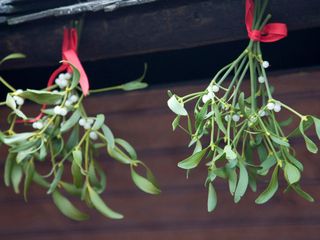
Why do people wear paper crowns?
You can thank the Romans for that one. Their Saturnalia celebrations (a festival that honoured the deity Saturn in December) always involved wearing decorative hats.
Why do we hang rings of twigs and berries over our front door?
Christmas wreaths actually date back to the ancient Greeks when a Harvest wreath woven with wheat was hung on family doors throughout the year. The tradition was adopted by Christians in Lutheran Germany in the 16th century to create an advent wreath - like the modern versions we enjoy today. The green foliage symbolises everlasting life and the circle - the never-ending cycle of God.
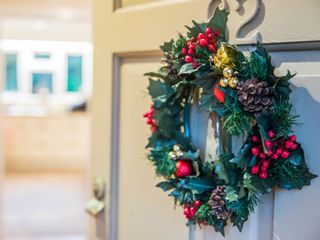
Why do you get coal if you're on the naughty list?
Apparently we have the Sicilians to blame for this one. It's quite possibly the strangest of all the Christmas traditions - but why do we joke about it? It's all down to La Befana, a little old lady who flies around town on the broomstick and comes down your chimney (sound familiar yet?) leaving lumps of coal for anyone who has behaved badly that year.
What is eggnogg?
It’s the marmite of festive beverages. Love it or hate it, eggnog at Christmas is here to stay. The drink actually dates back to the medieval posset with the ‘nog’ referring to ‘noggin’: a middle English word that refers to a wooden mug used to serve alcohol.

Why are they called mince pies when there's no mince in them?
Good question: that's because once upon a time they did. Mince pies made their journey to Europe in the 13th century when crusaders returned from the Middle East. Originally the large, oblong-shaped 'shrid pie' consisted of a mixture of minced meat, suet, a range of fruits, and spices such as cinnamon, cloves and nutmeg. It became a lot sweeter during its renaissance in the Victorian era and the meat (thankfully) was ditched.
Why do we have Christmas trees?
Few of us question why we plonk a dead tree in the corner of our living room and cover it in baubles. The tradition dates back to medieval Germany and northern France, where plays recounting the creation of the world were a popular mid-winter tradition. In every production, performed on 24th December, there was a tree on stage decorated with apples and ribbons, which symbolised the tree of life in the Garden of Eden. It was Queen Victoria who made Christmas trees fashionable in Britain, after her German husband Prince Albert decorated his own at Windsor Castle in 1841. Many people followed suit, topping their tree with a Union Jack.
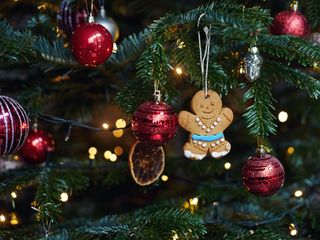
Why do we have advent calendars?
The concept of advent has been around for centuries, but it was actually a Munich housewife who thought up the advent calendar, inventing it to forestall her son Gerhard’s endless questions about how long it was until Christmas Day. She would attach sweets to her advent calendar with string, and Gerhard would get to eat one sweet every day. Despite starting as a family tradition, Gerhard Lang went on to become the first person to mass produce advent calendars in 1908 – standardising them to start from 1st December instead of St Andrew’s Day (30th November), when Advent actually starts. They've come a long way since then with newer creative iterations including beauty advent calendars and boozy advent calendars for very merry Christmases.
Why do we pull Christmas crackers?
Much like theories around Santa’s red outfit, the invention of crackers was an advertising gimmick; merely a way of popularising sweet wrappers. They started in London as ‘cracker bon-bons’ in the 1840s: a novelty sweet with a strip of mild explosive in the wrapper that was triggered when you pulled the ends. It was Tom Smith who decided to replace the sweet with a love poem on a piece of paper and, later, the terrible jokes we get now. His son Walter had the idea of putting a paper crown inside, and Tom Smith Crackers still remains the largest manufacturer of Christmas crackers in the world today.
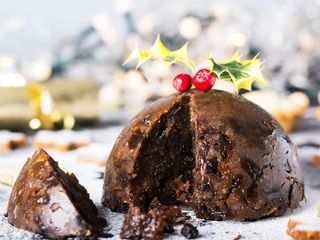
Why do we hide a silver sixpence in our Christmas pudding?
The hiding of a silver sixpence inside a Christmas pudding is a centuries-old custom that promises the finder of the coin good luck. The tradition dates back to Tudor times when nobles would appoint a servant as the Lord of Misrule – a person who presided over Christmas games – according to who found a bean or pea in the pudding. When the sixpence was first minted in 1551, the coin replaced the bean or pea and the tradition became popular.

Jenny Proudfoot is an award-winning journalist, specialising in lifestyle, culture, entertainment, international development and politics. She has worked at Marie Claire UK for seven years, rising from intern to Features Editor and is now the most published Marie Claire writer of all time. She was made a 30 under 30 award-winner last year and named a rising star in journalism by the Professional Publishers Association.
-
 Zendaya's reaction to awkward kissing question during Challengers interview has gone viral
Zendaya's reaction to awkward kissing question during Challengers interview has gone viral'Uncomfortable' doesn't begin to cover it
By Iris Goldsztajn
-
 Prince William feels 'immense responsibility' amid Kate and Charles cancer diagnoses
Prince William feels 'immense responsibility' amid Kate and Charles cancer diagnosesHe has a lot on his plate
By Iris Goldsztajn
-
 Taylor Swift just teased a 'timetable' for her new album release
Taylor Swift just teased a 'timetable' for her new album releaseThe wait is torture
By Iris Goldsztajn